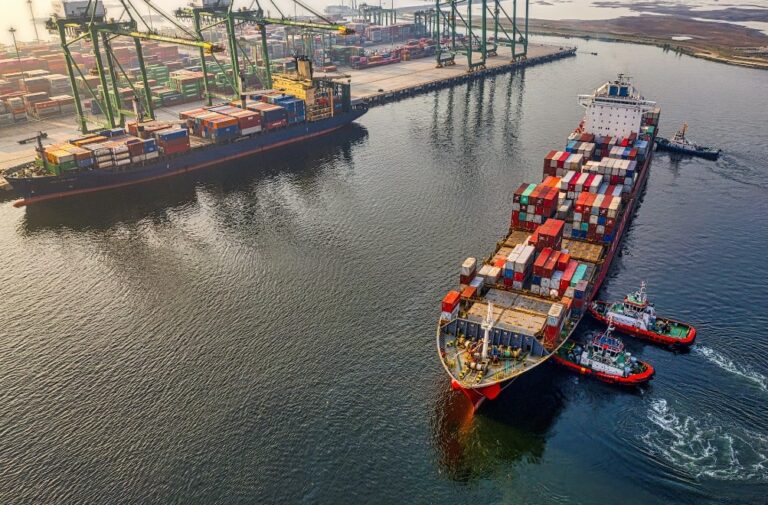Water covers more than 70% of the earth’s surface. It should not be surprising, therefore, that human beings since ancient times have exploited the seas to develop their civilizations and that, even today, the majority of trade takes place via sea.
The routes of ships to move from one sea to another, however, are neither infinite nor free. They pass through some obligatory sections and points, of enormous geopolitical importance, controlled today by the United States. Let’s see what they are, where they are located and why their control is essential to manage world trade.
Table of Contents
What are choke points
Choke points are channels and straits, natural or artificial, which represent obligatory passage points. They can be maritime or even terrestrial. They are of considerable importance, because whoever controls them can influence global geopolitical and economic structures.
There are four most strategic maritime choke points for trade routes:
- the Strait of Malacca, in south-east Asia;
- the Strait of Hormuz, between the Persian Gulf and the Gulf of Oman;
- the Panama Canal, which cuts Central America in two;
- the Suez Canal, which connects the Mediterranean with the Red Sea.
To these four choke points, four more of great importance can be added:
- the Strait of Gibraltar, which passes between the Mediterranean Sea and the Atlantic Ocean;
- the combined Bosphorus and Dardanelles, which allows the connection between the Mediterranean and the Black Sea;
- the Strait of Bab-el-Mandeb, between the Red Sea and the Gulf of Aden;
- the Cape of Good Hope, on the southern tip of Africa.
There are also numerous secondary choke points, including the Strait of Sicily, fundamental to the Italian geopolitical strategy in the Mediterranean.
Read also: Why the Houthi attacks in the Suez Canal pose risk of global commercial chaos
Who controls the choke points
When the American continent was discovered, it became even more important for European states (and beyond) to know how to build ships to cross oceans and trade. The higher this capacity was, the greater the wealth the country was able to obtain.
From the eighteenth century onwards, one state in particular dominated the world via the sea for more than two centuries: England. Her fleet was the most powerful in the world and had bases and colonies everywhere to be able to move quickly and make the most of the resources of the states under her control. England was what is called a “thalassocracy”, a power that expressed itself primarily through the dominion of the sea.
More than a century ago, however, another state realized that it had all the right characteristics to be able to expand and control the world via the seas. Namely, the United States of America. The country with stars and stripes, in fact, has an optimal geographical position to dominate the seas. It is located in the middle of Asia and Europe and overlooks the largest oceans on the planet.
During the first half of the twentieth century the USA increasingly expanded its area of influence and after the end of the Second World War it had become the leading world power. Above all thanks to its ability to dominate seas and oceans and the simultaneous decline of British Empire.
Since then the USA has been a staunch defender of freedom of navigation, which it defines as a “primary geopolitical good”. And it ensures that maritime routes are always safe and protected (above all, it must be said for their own interest).
How choke points are checked
To maintain and exercise control over seas and oceans, a maritime power must have bases and landing points spread across the planet. Just as England had its colonies, the USA has approximately 800 bases in more than 70 countries around the globe. Not only that. They patrol their seas and also international waters with their own fleets.
Choke points, as we have said, are of great importance for dominating maritime routes, both from a commercial and military point of view. And it is precisely there that the United States is most present. Vessels from the US fleet are present in all 8 major global choke points.
To give an example, the Strait of Malacca, fundamental for the competition with China, is manned by the US Seventh Fleet. Singapore, which overlooks the Strait, asked the United States to monitor it, and Washington built the largest military base in Asia there.
There are aircraft carriers, ships and military planes that with their high technology monitor what is happening in the Strait and at the same time, in case of emergency, can reach the Persian Gulf region in 24 hours.
Global warming and the Arctic routes
Over the last forty years, climate warming has led to the progressive thawing of Arctic ice during the summer. This allowed the opening of new trade routes in the Arctic region.
In 2017, Russia inaugurated the transpolar route to reach China and Northern Europe. Additionally, there is the Northwest Passage to the American and Canadian coasts and the Northeast Passage to Russia.
In general, for the moment these are almost unused routes, due to the concrete difficulties in traveling on them and the seasonal limitations. Furthermore, the Arctic is a territory disputed between various powers, Russia and the United States first and foremost.
However, it is probable that with a further increase in temperatures, the northern routes could become increasingly attractive for trade because they would allow time and costs to be reduced compared to current routes.












